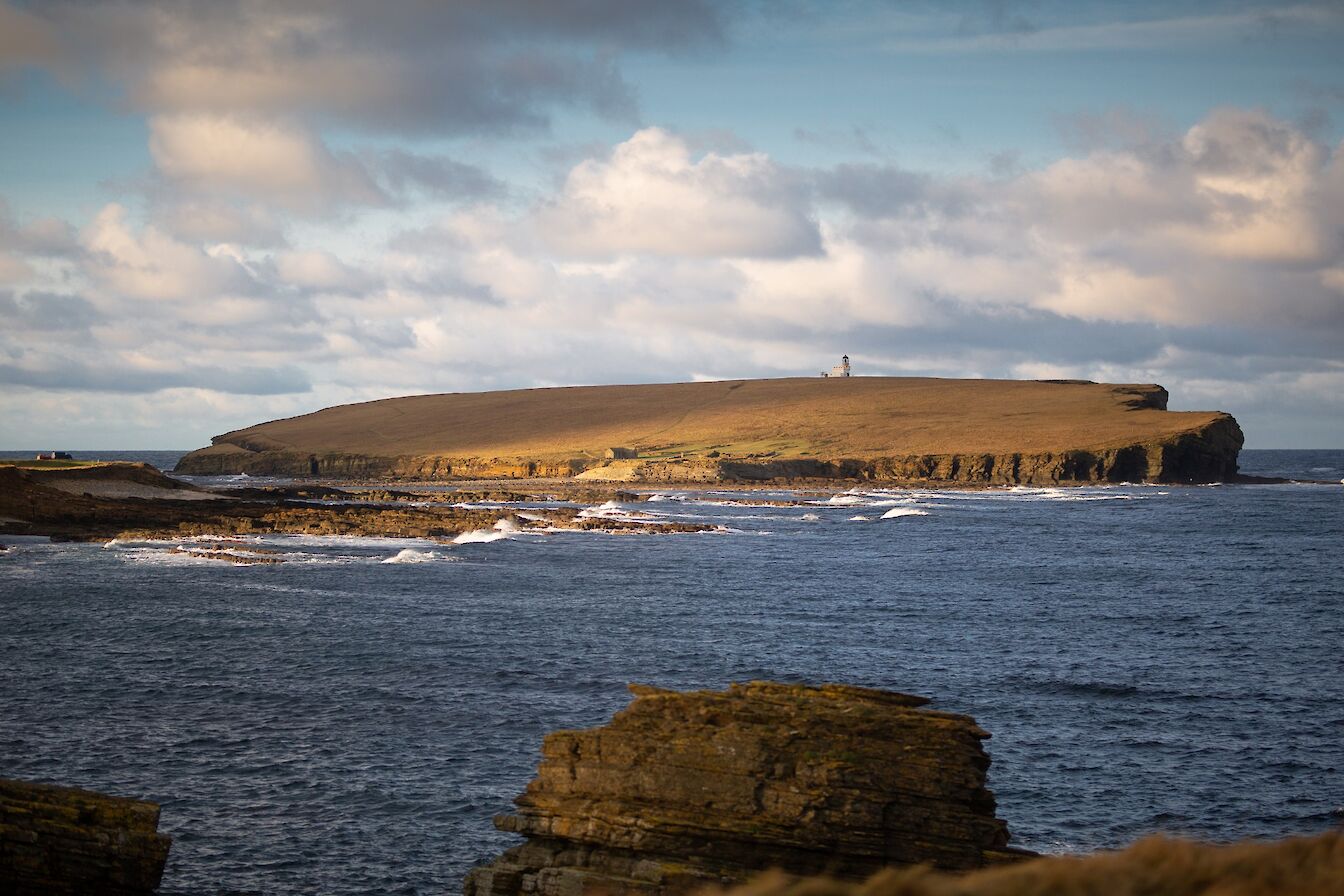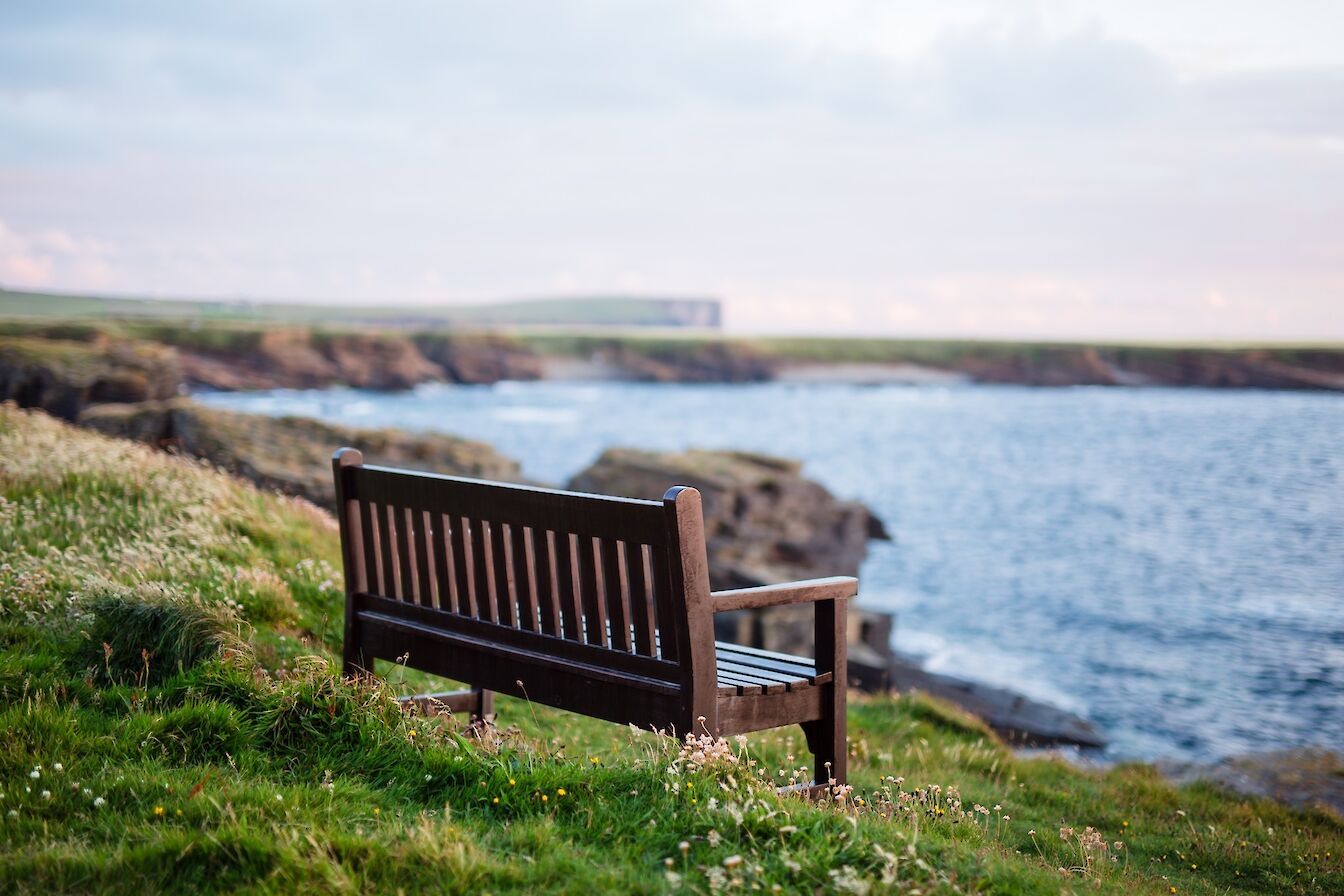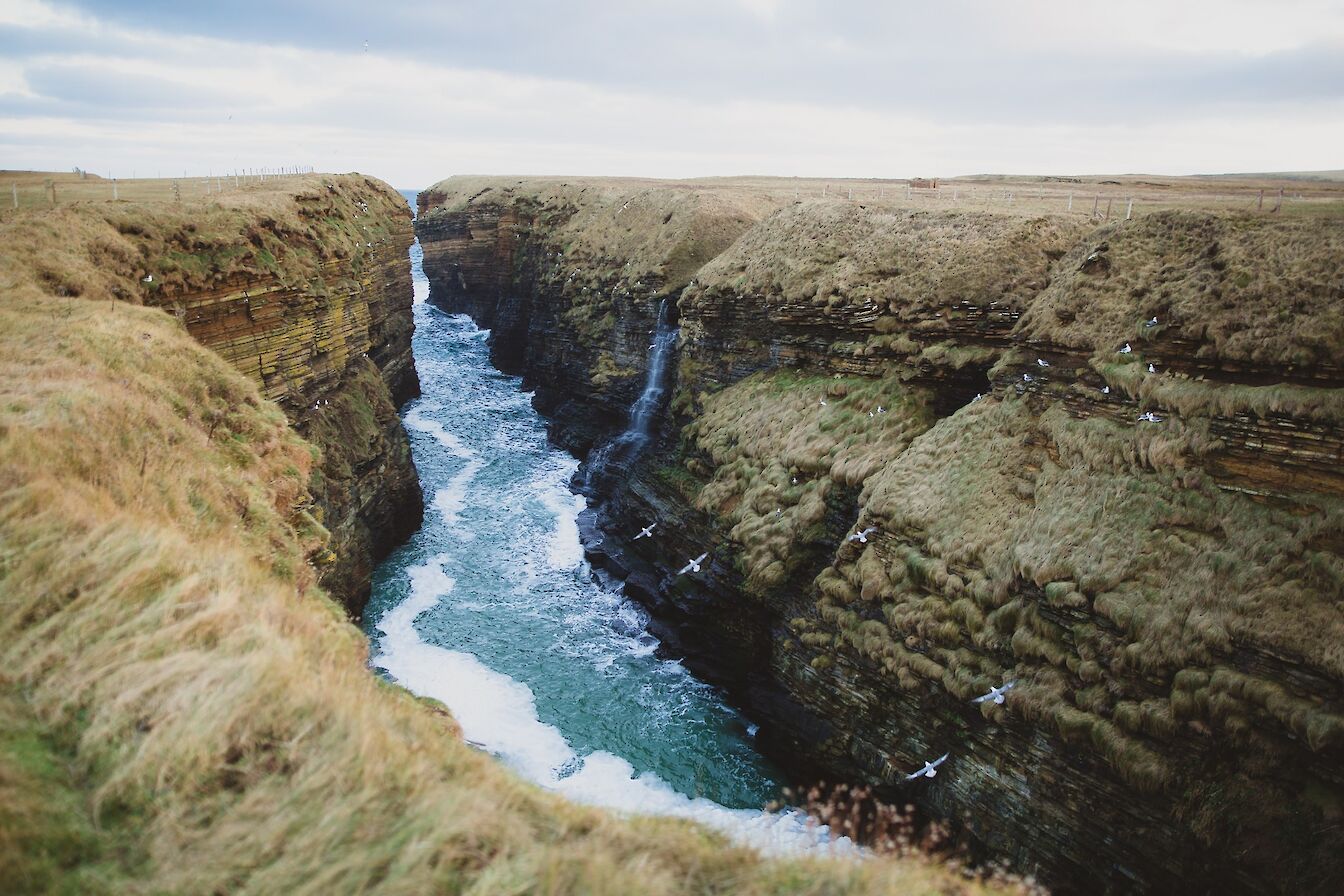NOTE: The Birsay Whalebone has been removed for restoration after suffering damage in stormy weather.
A gentle coastal walk, encompassing centuries of Orkney’s history.
The parish of Birsay is found at the northwest corner of the Orkney mainland and is home to some of the finest stretches of coastline in the islands. There are huge cliffs to be found here, as well as beaches, rockpools and geos, all facing the wild Atlantic Ocean.
Birsay has also played an important role in Orcadian history. This walking route covers an area that was once a major seat of power and its Viking roots can still be explored today.
It's also a place that gives you the chance to experience the best of the Orcadian elements.
The walk begins at the small car park just south of the impressive remains of Birsay's 16th century Earl's Palace. These ruins provide a tangible sense of the previous importance of the area and even give the surrounding village its name, simply referred to as Palace. The buildings are cared for by Historic Environment Scotland and entry is free. Visitors can wander through the remains of the grand two-storey structure built by Earl Robert Stewart, an illegitimate son of King James V of Scotland.
From Palace, follow the road north for around 1km towards the car park at the Brough of Birsay. The view to the south is dominated by the high cliffs of Marwick Head. You should just make out the stone tower of the Kitchener Memorial, one of two memorials to the Secretary of State for War and the crew of HMS Hampshire. 737 men were lost when the ship hit a German mine during a gale in 1916. Just twelve crewmembers survived the sinking. A further nine men were killed when the minesweeper Laurel Crown was blown up during subsequent clearance operations.
Westerly gales often leave high mounds of seaweed just below the road to your left, attracting a wide range of birds – watch for ringer plover darting around the banks of rotting ‘ware’.
A trip to the Brough of Birsay itself is probably worthy of its own expedition, but if you have the time and the tides are right (be sure to double check the tide times as there is only a short window at low tide available) then you can cross the causeway to this fascinating island.
A major stronghold in Pictish and Norse periods, the buildings are free to visit during winter months, though there is an entry fee during the summer. Visitors can explore the rest of the island throughout the year, and the cliffs to the north provide a good spot for puffin-watching in late spring, though great care should be taken around the clifftops.
From the car-park, head east along the coast for around a kilometre to Skiba Geo. This stretch of coastline is one of the best in Orkney for wave-watching. Following a westerly gale huge waves roll in from the Atlantic, collapsing in heaps of green water and frothing spume on the jagged headlands, best viewed from the safety of the path. Skiba Geo was once an important haven for the fishermen of Birsay’s Northside. The undulating ‘nousts’, or hollows, where their small boats were stored, can still be seen, alongside a charming fishermen’s hut.
A few hundred yards to the north, on a low, exposed headland, stands the Birsay Whalebone. Believed to have been erected in the late 19th century, the skull and jawbone of the huge leviathon – possible a right whale - may have originally been used as a navigational mark by the local fishermen. Looking eastwards, a splendid stretch of coastline leads upwards to the imposing headland of Costa. This is one of the highlights of the multi-day pilgrimage route of the St Magnus Way.
Follow the coast east for around 1km from the Whalebone, arriving at Longaglebe Geo, Orkney’s longest geo, or cleft, which cuts deep into the coast here. Pass through the wooden kissing gate before turning right to walk through the old fishermen’s settlement of Northside. Take the sharp left turn on the road after around 800m, and from here simply follow the public road for around 1.5km back to Palace, which is well-viewed from the slight elevation, with the sea and Marwick Head behind.
This walk offers some spectacular coastal views but remember to take extra and never get too close to the cliff edge. The public road on the route back does not have any pavements so be aware of passing traffic and be prepared to step onto the verge if needed.
Visit the Scottish Outdoor Access Code website for more information and advice on how to enjoy the outdoors responsibly.
Further information
- Places of interest
Birsay is a parish full of interesting places to visit. In the village of Palace you'll find the St Magnus Church just across from the car park where the walks begins. This modest building is thought to be located on the site of an earlier place of worship where the remains of Orkney's patron saint, Magnus, were initially brought following his martyrdom, around 1117. The east gable of the building holds a fine three-panelled stained-glass window depicting his story. A more recent stained-glass work created by artist Shona McInnes is also on display and contains references to many of the sights you'll see on the walk.
Nearby is the Barony Mill, featuring the only working water wheel in Orkney. The mill produces bere, an ancient form of Orcadian barley, and tours are available. Other attractions include HMS Tern, a former wartime airfield, and the fascinating Kirbuster Museum, showcasing life on an Orkney farm in years gone by.
- Food & drink
The popular Birsay Bay Tearoom can be found on the outskirts of Palace, offering meals, teas, coffees and fabulous homebakes. Check ahead for openings times, which change according to the season.
In the village you'll find JP Orkney's honesty box, full of homemade cakes, treats, condiments and much more. The nearby Palace Stores is a well-stocked shop offering plenty of food and drink options too.
- Transport & services
Orkney's number six bus service runs between Kirkwall and Birsay daily. View the full timetable on the Orkney Islands Council website.
Petrol is available at the Co-op supermarket in Dounby a little over six miles away.
There is a public toilet in the village offering one gents' and one ladies' toilet.








